The Future is Now: How 3D Printing Empowers Children's Growth
Share
In today's era of digital transformation and rapid technological advancement, our children are growing up in a world of infinite possibilities. 3D printing technology, as a transformative innovation, is not only making waves in industrial and medical fields but is also quietly reshaping our understanding of childhood education and future development. At Kidoodle, we are committed to bringing this magical technology into every home, enabling children to explore, learn, and create while having fun. So, how will this technology influence the next generation?
1. Cultivating Future Core Competencies: From "Consumers" to "Creators"
Traditional education often focuses on imparting knowledge, but the future world demands skills in problem-solving, innovative thinking, and hands-on practice. A 3D printer is an excellent tool for fostering these core competencies.
Enhancing STEM Skills: When children bring their mental models to life with a Kidoodle printer, they naturally engage with Science, Technology, Engineering, and Mathematics (STEM) concepts. From operating 3D modeling software to understanding printing materials and considering structural stability, every step is a vivid STEM learning experience.
Igniting Creativity and Critical Thinking: 3D printing allows children to materialize any whimsical idea. When their initial designs fail, they learn to analyze problems, adjust plans, and keep experimenting. This "learning by trial and error" process significantly develops their critical thinking and innovation.
Fostering Design Thinking and Problem-Solving: Children can design solutions for small problems in their daily lives, such as a unique storage box or a replacement part for a broken toy. This human-centered "design thinking" will benefit them throughout their lives.

2. Crafting Personalized Learning Experiences: The Infinite Possibilities of Education
"One-size-fits-all" education is fading, and personalized learning is the future. 3D printing provides powerful support for achieving this goal.
Customized Teaching Aids and Models: Teachers and parents can print customized educational models based on a child's specific learning needs, such as geographical terrain models, human organ structures, or even personalized alphabet blocks. This makes abstract concepts tangible, significantly boosting learning efficiency and interest.
Learning Through Play and Hands-on Practice: Imagine children hand-printing each planet of the solar system and then assembling them into a dynamic model, or printing miniature landscapes of historical buildings. The Kidoodle MiniBox A1 comes with over 1500 ready-to-print 3D models, carefully curated for young creators, ranging from animals and tools to seasonal crafts and playful toys. Our model library is updated regularly to keep imaginations alive. This immersive learning experience is far more profound and engaging than simply reading from books.
Data Insights:
According to a report by MarketsandMarkets, the global 3D printing in education market size is projected to grow from an estimated USD 1 billion in 2024 to USD 2.9 billion by 2029, at a Compound Annual Growth Rate (CAGR) of 23.7%. This strongly indicates the immense potential and growing adoption of 3D printing in the education sector.
A study by Stratasys found that students using 3D printing technology showed significant improvements in problem-solving and innovation skills.

3. Looking Ahead to Future Careers: Skills for Tomorrow's Workforce
Today's children will play a crucial role in tomorrow's labor market. Many future professions will be closely linked to digital manufacturing, innovative design, and interdisciplinary collaboration.
Mastering Cutting-Edge Technology: Exposure to 3D printing technology means children will possess the ability to operate advanced tools from an early age, laying a solid foundation for their future careers in engineering, design, architecture, medicine, or even art.
Cultivating Entrepreneurial Spirit: Through 3D printing, children can experiment with productizing their creative ideas, understanding the entire process from design and production to presentation. This implicitly nurtures their innovative and entrepreneurial spirit as well as practical skills.
Adapting to "Industry 4.0": 3D printing is one of the key technologies of "Industry 4.0." Early exposure and understanding will help children better adapt to the era of smart manufacturing and the digital economy.
Expert Perspectives:
The World Economic Forum has repeatedly emphasized that among the top ten skills required for future talent, critical thinking, creativity, and complex problem-solving are all high on the list, and 3D printing is an effective way to cultivate these skills.

4. Kidoodle: Igniting Every Child's Creativity
At Kidoodle, we believe every child is a born creator. Our Kidoodle MiniBox A1 3D Printer for Kids is designed to seamlessly integrate this transformative technology into family life, making it safer, simpler, and more engaging. We understand parents' paramount concern for their children's safety and well-being. That's why the MiniBox A1 features a fully enclosed design and a child safety lock, ensuring children are protected throughout their exploration. Furthermore, our accompanying PLA consumables are made from renewable plants like corn and cassava, being non-toxic, odor-free, and biodegradable, offering parents complete peace of mind.
We are dedicated to providing an experience of ultimate ease of use. Whether children are navigating through the intuitive touchscreen or utilizing our beginner-friendly Kidoodle Slicer for drag-and-drop design, their imaginative ideas can effortlessly come to life.
As parents, do you wish to provide your child with a unique opportunity to cultivate innovative thinking and hands-on skills? Do you hope they can engage with future technology from an early age and unlock their boundless potential? We warmly invite you to explore more about Kidoodle MiniBox A1 and discover the joy and possibilities of children's 3D printing for your family.

